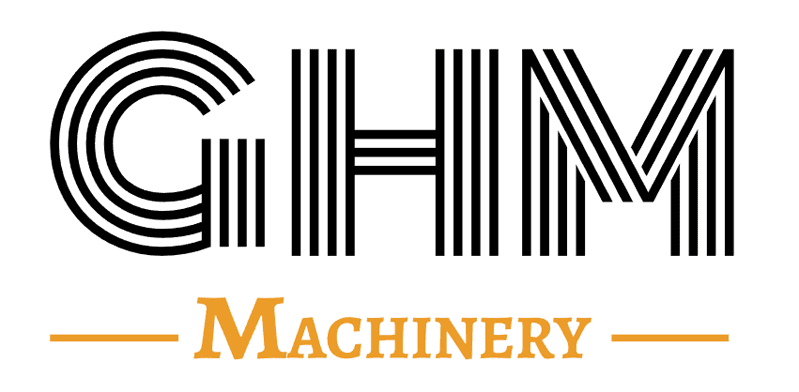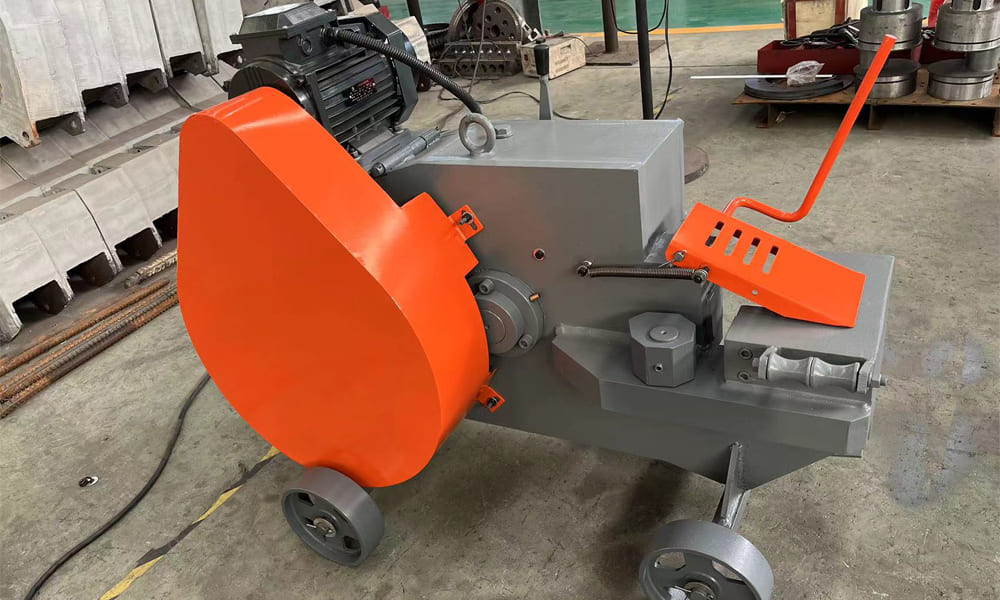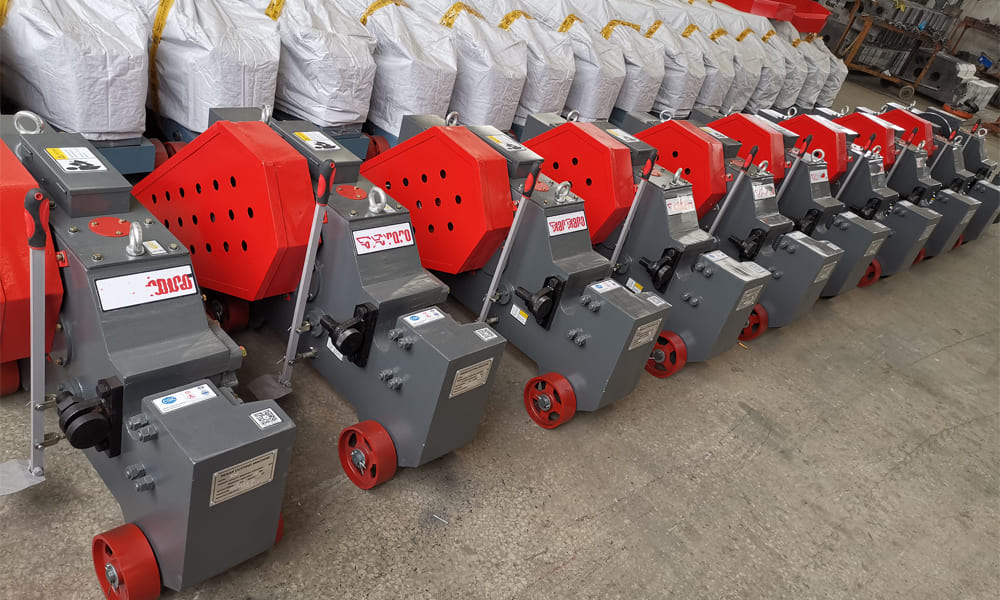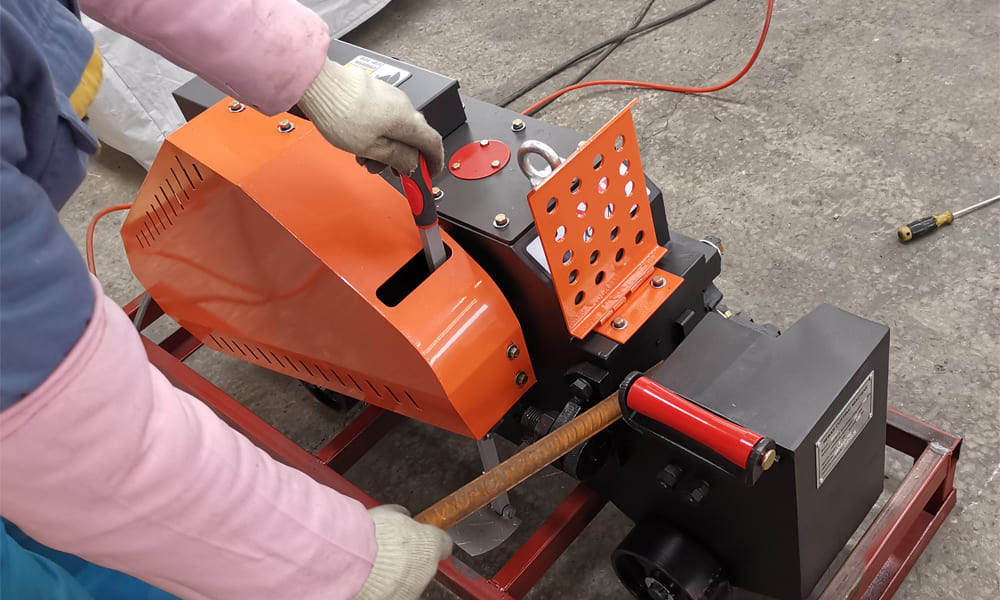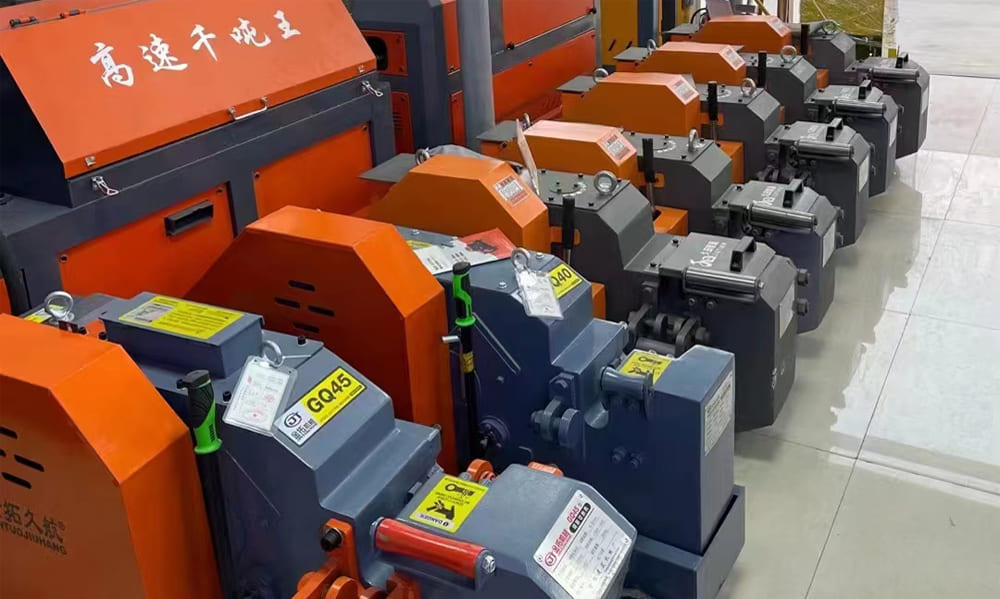Bar cutting machine is a vital piece of equipment used to cut steel bars in construction projects. These machines are indispensable in civil engineering for accurately cutting steel bars to specific lengths. They come in two main types: fully automatic and semi-automatic. Each type offers distinct advantages, making them highly efficient and widely used in steel bar processing.
Types of Bar Cutting Machine
- Fully Automatic Rebar Cutting Machines
- Also known as electric cutting machines, these convert electrical energy into kinetic energy through a motor, controlling the cutting blade to shear steel bars. Fully automatic machines are known for their high efficiency, reliability, and energy-saving capabilities.
- Semi-Automatic Rebar Cutting Machines
- These machines require manual operation to cut the steel bars. They are further categorized into rechargeable and portable hydraulic rebar cutting machines, offering flexibility in various work environments.
Horizontal Bar Cutting Machine
The horizontal rebar cutting machine operates through mechanical transmission and is widely favored for its simple structure and ease of use. It consists of a motor, transmission system, reduction mechanism, crankshaft mechanism, machine body, and cutting knife. This machine is ideal for cutting carbon steel bars ranging from 6mm to 40mm in diameter.
Working Principle: The motor drives an eccentric shaft via a V-belt pulley and gear reduction system. This action propels a connecting rod that drives a moving blade to cut the steel bars, with a fixed blade providing support. The spacing between the blades is typically 0.5 to 1mm, ensuring precise cuts.
Vertical Bar Cutting Machine
Vertical steel bar cutting machines are designed for fixed installations in steel bar processing lines, particularly in prefabrication plants.
Working Principle: A motor powers the flywheel shaft, which then drives an eccentric shaft through a three-stage gear reduction system. This mechanism enables the moving blade to reciprocate, cutting the steel bar in conjunction with the fixed blade. A handle-controlled clutch engages and disengages the blades, while a pressing device adjusts to accommodate steel bars of different diameters.
Electric Hydraulic Rebar Cutting Machine
This type of machine combines electric and hydraulic systems for cutting steel bars. It consists of a motor, hydraulic transmission system, control device, and fixed blade.
Working Principle: The motor rotates the eccentric shaft, which in turn drives a plunger to generate high-pressure oil. This pressure pushes a piston in the cylinder, moving the blade forward to cut the steel bar with precision.
Manual Hydraulic Rebar Cutting Machine
The manual hydraulic cutting machine is composed of a hydraulic system that includes a piston, plunger, hydraulic cylinder, and other components.
Working Principle: By manually operating the pressure rod, hydraulic oil is pumped into the cylinder, pushing the piston forward to move the cutting blade. This machine is ideal for cutting various types of steel, including round steel, flat steel, and square steel, making it versatile for different construction needs.
Safe Operation Guidelines
- Preparation:
- Ensure the work surface is level with the cutter. Check for cracks in the cutter, tighten blade holder bolts, and secure the protective cover.
- Machine Check:
- Before starting, manually rotate the pulley to check gear clearance and cutter alignment. Operate the machine without load to ensure all parts function correctly.
- Operation:
- Wait until the machine reaches full speed before cutting. Use the middle and lower parts of the cutter, holding the steel bar firmly. Never stand directly in front of the cutting blade.
- Material Limitations:
- Do not cut steel bars exceeding the machine’s specified capacity or red-hot steel bars. When cutting multiple bars, ensure the total cross-sectional area is within the machine’s limits.
- Handling Short Materials:
- Keep hands at least 150mm away from the cutter. For shorter bars, use a clamp to secure the material during cutting.
- Safety Precautions:
- Do not remove debris near the cutter by hand. Non-operating personnel should stay clear of the machine. Stop the machine immediately if abnormal noises or skewed blades are detected.
- Post-Operation:
- Turn off the power and clean the machine thoroughly, removing debris with a steel brush and applying lubrication as needed.
- Hydraulic Cutters:
- For hydraulic cutters, check the oil level and motor rotation direction. Exhaust air from the hydraulic cylinder before operation. For manual hydraulic cutters, remember to adjust the oil drain valve as needed during use.
By following these guidelines, operators can safely and effectively use rebar cutting machines, ensuring efficient performance and prolonged machine life in construction projects.
